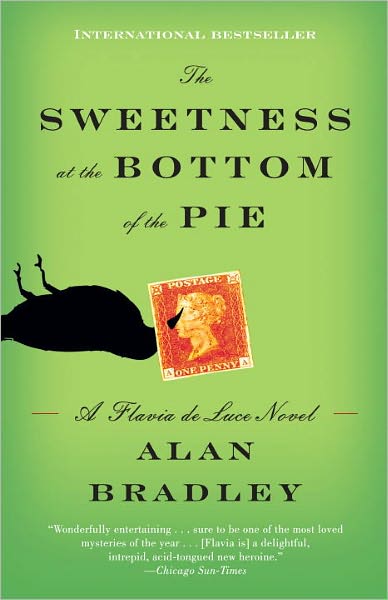 Alan Bradley’s clever mystery involves secrets from the past and rare stamps in post-WWII England. Set in 1950, the story is narrated by a young girl named Flavia. Her passion is chemistry. “Once I had taught myself to make sense of the chemical equations such as K4FeC6N6 +3K = 6KCN +Fe (which describes what happens when the yellow prussiate of potash is heated with potassium to produce potassium cyanide), the universe was laid open before me.” (p. 9-10) Flavia has a flare for poisons. When a stranger is found murdered in the family cucumber garden, Flavia’s father is held as a suspect. Flavia takes a dim view of the ineffectual investigations of the police and conducts her own search for clues. In the dead man’s luggage, Flavia finds two incredibly rare stamps. And that leads to further complications. My only quibble with Bradley’s book is that sustaining the fiction that a young girl, no matter how precocious, could outwit both the police and the killer. Charles Portis manages to pull this off with Maggie Ross in True Grit, but Bradley is no Portis. GRADE: B
Alan Bradley’s clever mystery involves secrets from the past and rare stamps in post-WWII England. Set in 1950, the story is narrated by a young girl named Flavia. Her passion is chemistry. “Once I had taught myself to make sense of the chemical equations such as K4FeC6N6 +3K = 6KCN +Fe (which describes what happens when the yellow prussiate of potash is heated with potassium to produce potassium cyanide), the universe was laid open before me.” (p. 9-10) Flavia has a flare for poisons. When a stranger is found murdered in the family cucumber garden, Flavia’s father is held as a suspect. Flavia takes a dim view of the ineffectual investigations of the police and conducts her own search for clues. In the dead man’s luggage, Flavia finds two incredibly rare stamps. And that leads to further complications. My only quibble with Bradley’s book is that sustaining the fiction that a young girl, no matter how precocious, could outwit both the police and the killer. Charles Portis manages to pull this off with Maggie Ross in True Grit, but Bradley is no Portis. GRADE: B


I find it tiresome after a while. She is too smart to be credible. And it just seemed dated in almost every way. Your last sentence sums it up.
I think readers with a background in chemistry like Art Scott might really enjoy THE SWEETNESS AT THE BOTTOM OF THE PIE, Patti. But, you’re right: the kid wasn’t convincing.
I’ve had this for a while but haven’t read it. I’m not encouraged.
It’s a quick read, Bill. But I think only Art Scott could appreciate the chemistry bent of the narrator.
I enjoyed this when it came out but haven’t continued to follow the series.
As an adult, I’m not usually wild about child sleuths.
Readers who would stay with this series would have to buy-in to the child character, Beth. Creating a believable child narrator is a tricky business.
I’ve read so many rave reviews on this book that it was almost a surprise to read one that wasn’t. The book is crazy popular, not that it matters in terms of quality. I decided to read it a while ago and am on the list at both the library (number 54 of 70) and on BookSwap (number 120 of 191). So it’s popular, and there are what? Two more? Artemis Fowl is also a really smart prodigy character, does everyone have the same problems with him? I happen to like those books, in small doses, so expected to like this one.
You may enjoy THE SWEETNESS AT THE BOTTOM OF THE PIE, Rick. Apparently, it is a book club favorite. Artemis Fowl doesn’t aim at realism the way this character does.
Well that’s true, Fowl is fantasy while this is mystery.
I think you can get away with more in fantasy, Rick. To really like THE SWEETNESS AT THE BOTTOM OF THE PIE you really have to believe in the narrator.
I don’t agree with the negative comments. I liked it a lot and in some ways found the second book (THE WEED THAT STRINGS THE HANGMAN’S BAG) even better. In fact, I just read book three (A RED HERRING WITHOUT MUSTARD).
But if you don’t like the first one there’s no point going on with the series.
And no, I didn’t have to believe in the reality of the characters to enjoy the books.
The ones I can’t read that everyone else seems to love are the Spellman books by Lisa Lutz. Cutesey but annoying. And I quit on the Thursday Next books after the second or third.
I might try THE WEED THAT STRINGS THE HANGMAN’S BAG and A RED HERRING WITHOUT MUSTARD, Jeff. The chemistry angle is both a plus and a minus.
I thought the third one had a lot less chemistry than the first one.
The chemistry angle intrigued me, Jeff. But I can see some chemistry-challenged readers being turned off by acids and bases.